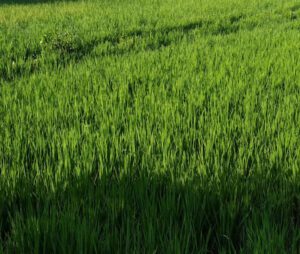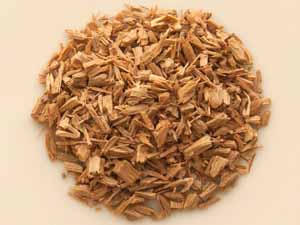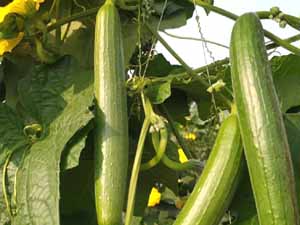Commercial carrot farming is a very old and popular business in many countries around the world. Carrot farming is very profitable and it’s very easy, even the beginners can also start growing carrots.
Actually, carrot is a root vegetable and it is found in almost all countries around the world. Generally, carrots are orange in color, but purple, black, white, red and yellow cultivars are also available. Most of these cultivars are domesticated forms of the wild carrots. The wild carrot (Daucus carota) is native to Europe and Southwestern Asia.
But the plant probably originated in Persia and was originally cultivated for it’s leaves and seeds. But most commonly eaten part of the carrot plants is the taproot, although the stems and leaves are also eaten. The modern domestic carrot has been selectively breed for it’s greatly enlarged, more palatable, less woddy-textured taproot.
Carrot is actually a biennial plant in the umbellifer family, Apiaceae. At first, it grows a rosette of leaves while building up the enlarged taproot. Today, there are numerous varieties/cultivars available. And fast-growing cultivars mature within 90 days of sowing the seed, but the slower-maturing cultivars need more than 120 days.
Carrots are highly nutritious very beneficial for health. The roots contain high quantities of alpha and beta-carotene, and are a very good source of Vitamin A, K and B6.[1] They are widely used in many cuisines, especially in the preparation of salads, and carrot salads are a tradition in many regional cuisines.
In the year of 2018, total world production of carrots and turnips was 40 million tonnes. China is the largest producer of carrots, with 45% of world total carrot production. However, commercial carrot farming is really very easy and profitable. Here we are trying to describe more information about this lucrative business.
Carrot Nutrition
Carrots are very nutritious and they are a very good source of several vitamins and minerals. Raw carrots are 0.2% fat, 1% ash, 2.8% dietary fiber, 0.9% protein, 9% carbohydrates and around 88% water. Carrot dietary fiber comprises mostly cellulose, with smaller proportions of hemicellulose, lignin and starch. Free sugars in carrot include sucrose, glucose, and fructose. But do you know, why carrots are of bright orange color? Carrots get their characteristic bright orange color from β-carotene, and lesser amounts of α-carotene, γ-carotene, lutein, and zeaxanthin. And all these nutrients are highly beneficial for health.
Health Benefits of Carrot
We have previously mentioned that, the carrots are highly nutritious and very good for human health. They are also very crunchy and tasty. They are very good source of antioxidants, beta carotene, fiber, potassium and vitamin K1. Here we are trying to describe the top health benefits of carrots.
- Carrots are very good source of calories, but contain less amount of fat. It is also rich in fiber and protein.
- Carrots are about 10% carbs, consisting of starch, fiber and simple sugars.
- Carrots are an excellent source of vitamin A in the form of beta carotene. And they are also a good source of several B vitamins, as well as vitamin K and potassium.
- Carrots are also a great source of many other plant compounds, especially carotenoids, such as beta carotene and lutein.
- Diets rich in carotenoids may help to protect against several types of cancer. So regular consumption of carrots can reduce the risk of cancer.
- High cholesterol level is very dangerous and is a well-known risk factor for heart disease. And regular intake of carrots has been linked to lower cholesterol levels.
- Consumption of carrots can help you to loose weight, because it is a low calorie food and contain very less fat.
- As carrots are very high in vitamin A and antioxidants, so they are great for improving your eye health.
Advantages of Carrot Farming Business
Commercial or large scale carrot farming is a very easy and profitable business. And starting commercial carrot farming business is very simple, even the beginners can also start this business. Although, having prior experience or practical knowledge will help you to make more profits. Here we are trying to describe the top advantages of carrot farming business.

- Commercial carrot farming business is very easy and it’s a great way for making high profits.
- Starting carrot production commercially is relatively easy, even the beginners can also start this business.
- Commercial production of carrots is already an established business. So, you don’t have to worry much about starting and operating this business.
- The carrot plants are very strong and hardy, and they generally require less caring and other management.
- Caring the carrot plants is very easy and simple.
- Both demand and value of carrots are high in the market.
- You don’t have to worry much about marketing your products. Because, carrots already have very good market demand and value.
- Many people are already doing this business commercially for making money. So, you don’t have to worry much about starting and operating this business. Although, you can consult with some existing farmers in your area for having more knowledge.
- Commercial production of carrots is very profitable. So, it can be a very good employment source for the people. Especially for the educated but unemployed young people.
- Total production costs in commercial carrot farming business is relatively less, but you will be able to make good profits shortly.
- Carrots are highly nutritious and very beneficial for human health. And you can start enjoying fresh carrots if you start your own production.
How to Start Carrot Farming Business?
As we have mentioned previously, commercial carrot farming is very easy and simple. You can start carrot farming business easily just like many other commercial crops. Actually, starting commercial carrot farming is just like starting other crop farming business. Even the beginners can also also start this business. Here we are trying to describe more information about starting and operating a successful carrot farming business.
Step 1. Learn Practically
First of all, try to learn more about this business practically. Visit as many farms as you can within your local area to learn more.
Step 2. Site Selection
Carrots generally grow well in almost all types of soils. But they require deep, loose loamy soils for good root development. Very loose and very heavy soils are not suitable for carrot farming. The pH level should be between 5.5 and 7 for maximum production.
Step 3. Prepare the Soil
Preparing the soil perfectly is very important good growth of the plants and also for good carrot production. Plough the land throughly and make the land weed and clods free. Add as much organic fertilizers as you can. Or at least try to add 10 ton well decomposed cow dung per acre. And mix these organic fertilizers well in soils at the time of land preparation.
Step 4. Consider The Climate Requirement For Carrot Farming
Carrots generally grow very well in cool temperature. Although, exact time of the year can vary depending upon the region you are living. For optimum growth of the carrots, the night temperature should be dropping to about 13° C and the daytime temperatures should be averaging 24° C.
Step 5. Best Time For Carrot Cultivation
At elevation above 1500 meters, Carrot can be grown throughout the year under assured irrigation. At elevations between 1000 – 1500 meters, Carrot can be grown in July – February. And August is the best time for planing carrots in the plains.
Step 6. Choose a Variety
There are numerous cultivars or varieties of carrots available throughout the world. But the carrot cultivars are grouped mainly into 2 broad classes, eastern carrots and western carrots. However, not all cultivars perform same in all areas. So, we recommend consulting with your local farmers for having better recommendation.
Step 7. Propagation
Propagation of carrots is done through seeds.
Step 8. Purchase Seeds
Carrot seeds are highly available in the market. You can easily purchase the seeds from any of your nearest seed supply store. You can also consider ordering online.
9. Planting
Plant the seeds in rows, 3-4 inches apart and the rows should be at least a foot apart. Keep the soil moist, but not wet (just don’t let it dry out). Don’t panic if your carrots don’t appear the right way. Carrots are actually slow to germinate and it may take 3 or more weeks for germinating in some cases. You will need about 4-5 kg of seeds for cultivating carrots in one acre land. Soak the seeds in water for 12-24 hours before sowing. Doing this will increase the germination percentage.
Step 10. Caring
The carrot plants are very hardy and grow rapidly. They don’t require much caring. But taking additional caring will help the plants to grow well and produce large, well developed carrots.
Fertilizing: Add as much well decomposed cowdung as possible while preparing the soil. And along with organic fertilizers, apply Urea at the rate of 55 kg, SSP at the rate of 75 kg and MOP at the rate of 50 kg per acre. You can add all these fertilizers before sowing (while preparing the soil by ploughing and harrowing).
Irrigation: Adequate irrigation is a must for better root development. Apply the first irrigation immediately after sowing the seeds. Apply additional irrigation at interval of 6-7 days in summer and 10-12 days interval in winter months depending upon soil type and climate. Stop irrigation 2-3 weeks before harvesting. And doing so will help to increase sweetness and taste of carrot.
Mulching: Mulching play a very important role in retaining moisture into the soil. And it also helps to prevent weeds. You can use organic materials for using as a mulch.
Controlling Weeds: Controlling weeds is very important, because weeds consume nutrients from the soil and your crop will suffer. Regular weeding and hoeing will help to prevent most of the weeds.
Step 11. Control Pests And Diseases
Like many other commercial crops, the carrots are also susceptible to some pests and diseases. Here we are trying to describe about these pests and diseases and their controlling methods.
Diseases And Their Control: Leaf spot is the common disease of carrot plant. Spray Mancozeb at the rate of 2 grams per liter of water for controlling this disease.
Pests And Their Control: Common pest of the carrot plant is nematodes. You can apply neem cake at the rate of 0.5 ton per acre at the time of sowing for controlling nematodes.
Step 12. Harvesting
Exact harvesting time depend upon variety. Some variety mature within 90 days, while some varieties take more than 120 days to mature. Harvesting is generally done manually by uprooting the plants. Remove the green tops after harvesting and then wash them and finally they are ready for marketing.
Step 13. Yield
It’s very tough to tell the exact number or amount. On average you can expect between 25 and 30 tonnes per hectare.
Step 14. Marketing
Marketing carrots is very easy and simple. You can easily sell your products in the local market. Although, you should set your marketing strategies before starting any business.
These are the steps and ways of profitable carrot farming business. Hope this guide has helped you! Good luck & may God bless you!





